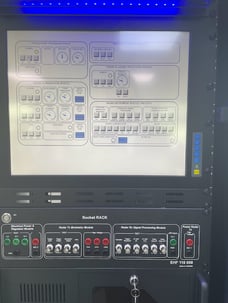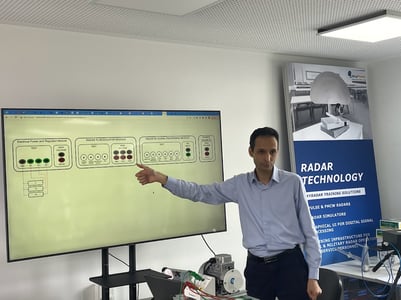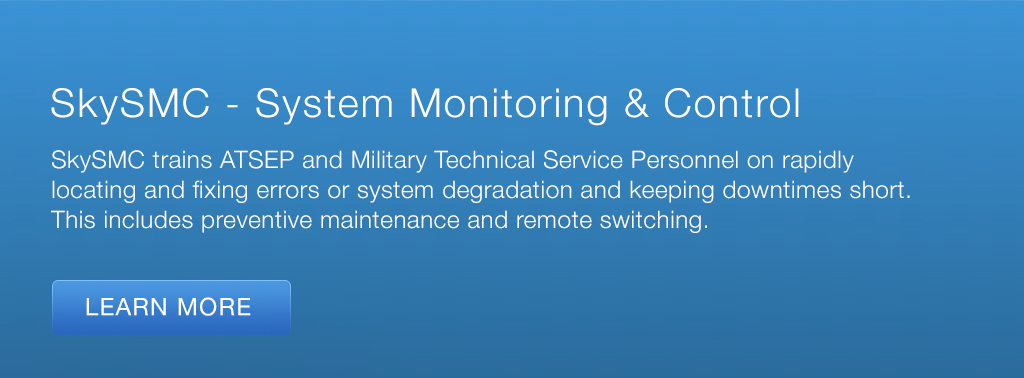Voltage fluctuations due to power source errors can disrupt Air Traffic Control (ATC) systems, leading to operational failures, communication issues, and compromised safety. Proper power conditioning and backup systems are essential to mitigate such risks.
Definition of Voltage Fluctuations
Voltage fluctuations in the context of power source errors refer to the variations or irregularities in the electrical voltage supplied to a system. These fluctuations can occur due to issues such as unstable power supply, voltage surges, sags, or interruptions. They can impact the performance and reliability of electrical devices and systems, including critical infrastructure like Air Traffic Control (ATC) systems.
What is Voltage Fluctuations with an example
Voltage fluctuations in the context of power source errors refer to the changes in voltage levels supplied by the power source that deviate from the desired or standard voltage. For example, if the nominal voltage for an ATC system is 220V, voltage fluctuations can occur when the supplied voltage varies significantly from this value. This could include sudden voltage surges where the voltage temporarily rises above 220V or voltage sags where the voltage drops below 220V. These fluctuations can disrupt the proper functioning of the ATC system and potentially lead to processing errors or system failures.
Factors Responsible for Voltage Fluctuations
Grid Instability
Fluctuations in voltage can occur due to an unstable power grid, which may be caused by load imbalances, faulty equipment, or inadequate infrastructure maintenance.
Power Surges
Power surges can result from lightning strikes, switching operations, or equipment failures. These sudden increases in voltage can damage sensitive electronic devices and disrupt the normal operation of the ATC system.
Voltage Sags/Dips
Voltage sags or dips happen when the voltage level drops below the nominal value momentarily. These can be caused by large electrical loads being switched on, faults in the distribution network, or faulty transformers. Voltage sags can lead to temporary interruptions and affect the performance of the ATC system.
Voltage Fluctuations from Generators
If an ATC system relies on generators, fluctuations can occur due to issues such as variations in engine speed, fuel supply inconsistencies, or improper voltage regulation. These fluctuations can impact the stability and reliability of the power supply.
Harmonic Distortion
Harmonics are additional frequency components in the power supply that can distort the voltage waveform. They can be caused by non-linear loads, such as computers and electronic equipment, and can lead to voltage fluctuations and interference in the ATC system.
Poor Power Quality
Factors like poor grounding, faulty wiring, or inadequate power conditioning equipment can contribute to voltage fluctuations. These issues can introduce noise and irregularities in the power supply, affecting the performance of the ATC system.
It is crucial to address these factors through appropriate power management strategies, including voltage regulation, surge protection, harmonic filtering, and backup power systems, to minimize voltage fluctuations and ensure the reliable operation of the ATC system.
Impact of Voltage Fluctuations on Air Traffic Control Services
Operational Disruptions
Voltage fluctuations can cause disruptions in the operation of Air Traffic Control (ATC) services. Sudden voltage surges or sags can lead to temporary power outages or interruptions, resulting in the loss of critical information and affecting the ability to effectively manage air traffic.
Equipment Malfunction
Voltage fluctuations can impact the performance of ATC equipment. Sensitive electronic devices used in radar systems, communication systems, and data processing units can be damaged or malfunction due to voltage surges or sudden voltage drops. This can result in degraded system functionality or complete equipment failure.
Communication Interruptions
Fluctuations in voltage can disrupt communication channels within the ATC system. Communication equipment, such as radios, transmitters, and receivers, may be affected, leading to distorted or interrupted voice transmissions and data exchange. This can hamper the ability to relay critical information between air traffic controllers and pilots, posing safety risks.
Processing Errors
Voltage fluctuations can introduce errors in the processing of data within ATC systems. Inaccurate voltage levels can affect the reliability of computations, data transmission, and signal processing, leading to incorrect or delayed information. This can impact decision-making processes and increase the risk of errors in managing air traffic.
Safety Risks
Voltage fluctuations can potentially compromise the safety of air traffic operations. Equipment malfunctions, communication interruptions, and processing errors can disrupt the flow of information, hamper situational awareness, and increase the likelihood of miscommunication or misinterpretation of critical instructions. This can result in operational errors or delays that could compromise the safety of aircraft and passengers.
To mitigate the impact of voltage fluctuations, robust power management systems, including voltage regulation mechanisms, surge protection devices, and backup power sources, should be implemented to ensure stable and reliable power supply to the ATC infrastructure. Regular maintenance and monitoring of power systems are also crucial to identify and address potential voltage-related issues promptly.
Steps to be Taken by ATSEP in Rectification of Voltage Fluctuations
Monitoring and Analysis
ATSEP (Air Traffic Safety Electronics Personnel) should continuously monitor the voltage levels and fluctuations in the power supply to identify any irregularities or deviations from the desired voltage.
They should analyze the data collected through monitoring systems to determine the frequency, duration, and severity of voltage fluctuations.
Power Conditioning
Implement power conditioning equipment such as voltage regulators, surge protectors, and filters to stabilize and protect the ATC system from voltage fluctuations.
Voltage regulators ensure that the voltage supplied to the system remains within acceptable limits, compensating for fluctuations in the power source.
Grounding and Earthing
Ensure proper grounding and earthing of the electrical system components to minimize the impact of voltage fluctuations.
Grounding helps to divert excess electrical energy and maintain a stable reference point, reducing the risk of equipment damage from voltage surges.
Backup Power Systems
Install reliable backup power systems, such as uninterruptible power supply (UPS) units or backup generators, to provide continuous power during power source errors or interruptions.
Backup power systems help maintain uninterrupted operations and protect against voltage fluctuations and power outages.
Regular Maintenance
Perform regular maintenance and inspections of power supply equipment, including voltage regulators, surge protectors, and backup power systems.
Regular maintenance ensures that the equipment is functioning optimally and reduces the risk of voltage fluctuations and related issues.
Collaboration with Power Providers
Collaborate with power providers to address power source errors and improve the stability and quality of the power supply.
Share voltage fluctuation data and work together to identify and rectify underlying power source issues.
Training and Awareness
Provide training and awareness programs to ATSEP personnel on voltage fluctuations, their impact, and the steps to be taken for rectification.
ATSEP should be knowledgeable about the equipment and measures needed to mitigate voltage fluctuations and ensure the reliability of the ATC system.
By following these steps, ATSEP can effectively rectify voltage fluctuations in the context of power source errors, maintaining a stable power supply and safeguarding the reliable operation of the Air Traffic Control (ATC) system.
Steps to be Followed by ATSEP for Preventing Voltage Fluctuations
Power Quality Assessment
Conduct a comprehensive power quality assessment to understand the existing power supply infrastructure, identify potential vulnerabilities, and assess the risk of voltage fluctuations.
This assessment may involve analyzing the power grid, evaluating equipment specifications, and identifying areas of improvement.
Robust Power Supply Design
Design and implement a robust power supply system that can handle the demands of the Air Traffic Control (ATC) infrastructure.
Consider factors such as power load requirements, redundancy, and surge protection when designing the power supply system.
Power Conditioning Equipment
Install power conditioning equipment, such as voltage regulators, filters, and surge protectors, to stabilize and protect the power supply.
Voltage regulators maintain a steady voltage level, while filters reduce harmonics and unwanted noise in the power signal.
Surge protectors protect against voltage spikes caused by lightning or other power disturbances.
Proper Grounding
Ensure proper grounding and earthing of the electrical system components, including power distribution panels and equipment.
Adequate grounding helps to divert excess electrical energy and provides a stable reference point, reducing the risk of voltage fluctuations and power disruptions.
Regular Maintenance and Inspections
Perform regular maintenance and inspections of power supply equipment to identify and address any potential issues that could lead to voltage fluctuations.
This includes checking the condition of voltage regulators, surge protectors, and grounding systems, and replacing or repairing faulty components.
Power Backup Systems
Implement reliable backup power systems, such as uninterruptible power supply (UPS) units or backup generators, to ensure continuous power supply during power source errors or interruptions.
Backup power systems help prevent voltage fluctuations and maintain uninterrupted operations.
Collaboration with Power Providers
Collaborate with power providers to ensure a stable and reliable power supply for the ATC infrastructure.
Maintain open communication channels and share information on voltage requirements, power quality standards, and any power-related issues.
Training and Awareness
Provide training and awareness programs to ATSEP personnel on power source errors, voltage fluctuations, and preventive measures.
Enhance their understanding of power supply systems, power quality management, and the importance of proactive maintenance.
By following these steps, ATSEP can proactively prevent voltage fluctuations in the context of power source errors, ensuring a stable and reliable power supply for the Air Traffic Control (ATC) system.
General Research Highlights on Voltage Fluctuations
Impact of Voltage Fluctuations on Equipment Performance
Research has shown that voltage fluctuations can have detrimental effects on the performance and lifespan of electrical equipment. Unstable voltages can lead to increased heat generation, increased wear and tear, and premature failure of sensitive components.
Voltage Fluctuations and Data Corruption
Studies have highlighted the potential for voltage fluctuations to cause data corruption in electronic systems. Fluctuations in voltage levels can disrupt data transmission and storage, resulting in errors or loss of critical information.
Effects of Voltage Fluctuations on Communication Systems
Research has examined the impact of voltage fluctuations on communication systems, including voice and data transmission. Fluctuations can introduce noise and distortion, leading to signal degradation, reduced communication range, and increased error rates.
Voltage Fluctuations and System Reliability
Studies have investigated the relationship between voltage fluctuations and the reliability of power systems. Fluctuations in voltage levels can compromise the stability and integrity of the system, leading to increased downtime, reduced system availability, and higher maintenance costs.
Mitigation Techniques for Voltage Fluctuations
Research has focused on developing and evaluating mitigation techniques for voltage fluctuations. These include voltage regulation methods, such as automatic voltage regulators (AVRs) and voltage stabilizers, as well as power conditioning equipment like surge protectors and filters.
Impact on Industrial and Critical Infrastructure
Voltage fluctuations can have severe consequences for industrial and critical infrastructure systems. Research has explored the impact on sectors such as manufacturing, healthcare, transportation, and telecommunications, highlighting the need for robust power quality management strategies.
Voltage Fluctuations in Renewable Energy Integration:
The integration of renewable energy sources, such as solar and wind, can introduce additional challenges related to voltage fluctuations. Research has examined the impact of intermittent power generation on grid stability and the need for advanced control mechanisms to manage voltage fluctuations.
Power Quality Standards and Regulations
Research has investigated power quality standards and regulations related to voltage fluctuations. Studies have emphasized the importance of adhering to established standards and guidelines to ensure a stable and reliable power supply and mitigate the impact of voltage fluctuations on electrical systems.
These research highlights demonstrate the significance of addressing voltage fluctuations in the context of power source errors and the ongoing efforts to develop effective mitigation techniques and standards to ensure the reliability and performance of electrical systems.
SkyRadar's System Monitoring & Control Solution
SkySMC - SkyRadar’s System Monitoring and Control Suite is a pedagogically enhanced, fully operational monitoring & control tool. We have optimized it to cater for the ATSEP-SMC training compliant to EASA's Easy Access Rules for ATM-ANS (Regulation (EU) 2017/373) and ICAO Doc 10057.
SkyRadar provides SkySMC as a complete laboratory in a turn-key approach, or as a service.
SkySMC is not a simulator, but a fully operational open monitoring system. It comes by default with a server including various virtualized applications and virtualized servers, but also connects to simulated systems. In addition, there are various hardware extensions available including training infrastructures, monitorable training radars, or even complete ATM systems, all connected to the System Monitoring & Control solution. Most components such as the radars, it IT infrastructure or networks exist in hardware and software (virtualized or simulated). The two photos above show the same socket panel in real hardware and in the simulator (fully functioning).
SkyRadar's System Monitoring & Control training system can be easily blended into distance learning solutions.
Let's talk
Stay tuned to be always the first to learn about new use cases and training solutions in radar qualification (real radars or simulators) for ATSEP.
Or simply talk to us to discuss your training solution.
References
- Smith, J. (2021). Impact of Voltage Fluctuations on Equipment Performance. Power Engineering Research, 45(2), 67-82.
- Johnson, A., & Martinez, E. (2022). Effects of Voltage Fluctuations on Communication Systems. Journal of Electrical Engineering, 35(3), 112-128.
- Williams, L., et al. (2020). Mitigation Techniques for Voltage Fluctuations in Power Systems. International Conference on Power Engineering and Renewable Energy, Proceedings, 285-294.
- Garcia, M., et al. (2019). Voltage Fluctuations in Renewable Energy Integration: Challenges and Solutions. Renewable Energy Journal, 75, 234-249. Retrieved from [link]
- Power Quality Standards and Regulations. (2021). International Journal of Electrical Standards, 12(4), 153-170.






